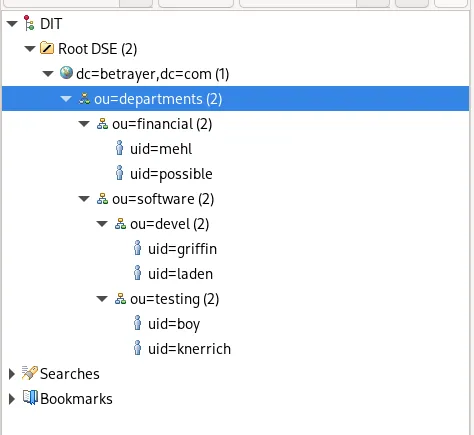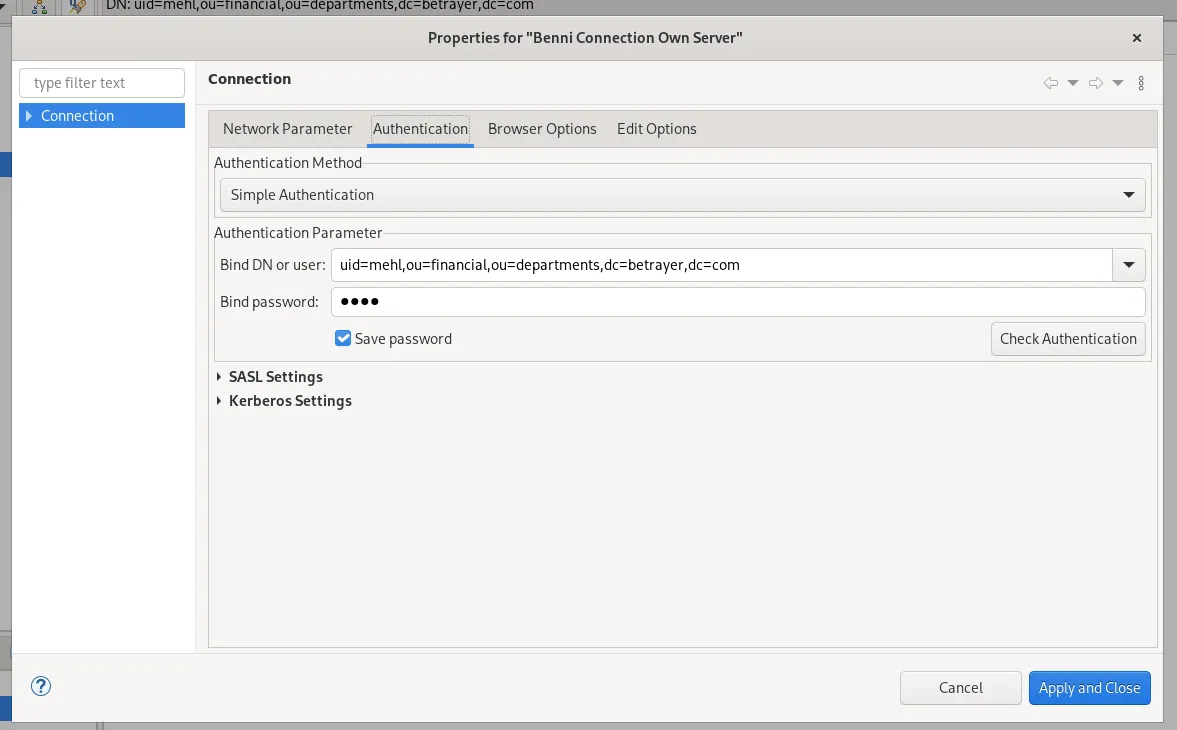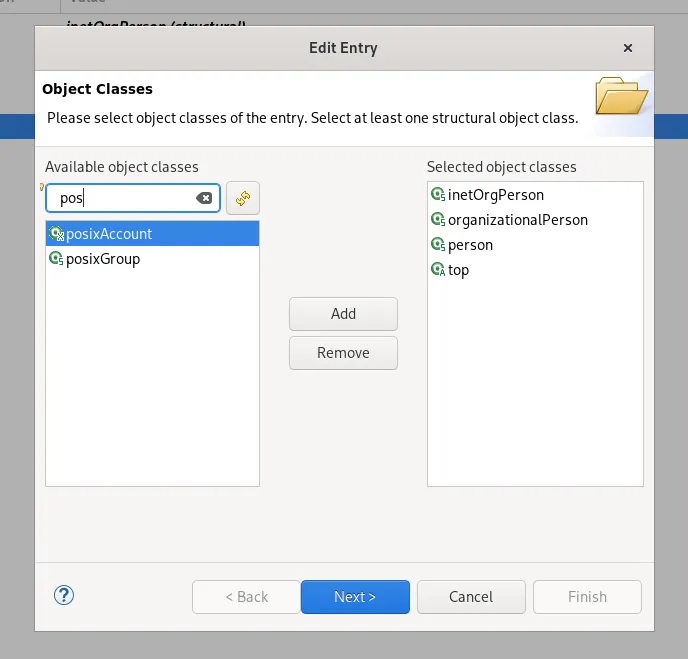Populating LDAP Server
Populating our DIT
After populating our DIT with a Tree and Users it looks like this

The Export LDIF dump for this looks like this:
version: 1
dn: dc=betrayer,dc=com
objectClass: dcObject
objectClass: organization
objectClass: top
dc: betrayer
o: MaxUndBenni
dn: ou=departments,dc=betrayer,dc=com
objectClass: organizationalUnit
objectClass: top
ou: departments
dn: ou=software,ou=departments,dc=betrayer,dc=com
objectClass: organizationalUnit
objectClass: top
ou: software
dn: ou=financial,ou=departments,dc=betrayer,dc=com
objectClass: organizationalUnit
objectClass: top
ou: financial
dn: ou=devel,ou=software,ou=departments,dc=betrayer,dc=com
objectClass: organizationalUnit
objectClass: top
ou: devel
dn: ou=testing,ou=software,ou=departments,dc=betrayer,dc=com
objectClass: organizationalUnit
objectClass: top
ou: testing
dn: uid=griffin,ou=devel,ou=software,ou=departments,dc=betrayer,dc=com
objectClass: inetOrgPerson
objectClass: organizationalPerson
objectClass: person
objectClass: top
cn: Peter Griffin
sn: Griffin
givenName: Peter
mail: [email protected]
uid: griffin
userPassword:: e3NtZDV9YVhKL2JlVkF2TDRENk9pMFRLcDhjM3ovYTZQZzBXeHA=
dn: uid=laden,ou=devel,ou=software,ou=departments,dc=betrayer,dc=com
objectClass: inetOrgPerson
objectClass: organizationalPerson
objectClass: person
objectClass: top
cn: Felix Laden
sn: Laden
givenName: Felix
mail: [email protected]
uid: laden
userPassword:: e3NtZDV9YVhKL2JlVkF2TDRENk9pMFRLcDhjM3ovYTZQZzBXeHA=
dn: uid=mehl,ou=financial,ou=departments,dc=betrayer,dc=com
objectClass: inetOrgPerson
objectClass: organizationalPerson
objectClass: person
objectClass: top
cn: Benjamin Mehl
sn: Mehl
givenName: Benjamin
mail: [email protected]
uid: mehl
userPassword:: e01ENX1DWTlyelVZaDAzUEszazZESmllMDlnPT0=
dn: uid=possible,ou=financial,ou=departments,dc=betrayer,dc=com
objectClass: inetOrgPerson
objectClass: organizationalPerson
objectClass: person
objectClass: top
cn: Kim Possible
sn: Possible
givenName: Kim
mail: [email protected]
uid: possible
userPassword:: e3NtZDV9YVhKL2JlVkF2TDRENk9pMFRLcDhjM3ovYTZQZzBXeHA=
dn: uid=knerrich,ou=testing,ou=software,ou=departments,dc=betrayer,dc=com
objectClass: inetOrgPerson
objectClass: organizationalPerson
objectClass: person
objectClass: top
cn: Max Knerrich
sn: Knerrich
givenName: Max
mail: [email protected]
uid: knerrich
userPassword:: e3NtZDV9YVhKL2JlVkF2TDRENk9pMFRLcDhjM3ovYTZQZzBXeHA=
dn: uid=boy,ou=testing,ou=software,ou=departments,dc=betrayer,dc=com
objectClass: inetOrgPerson
objectClass: organizationalPerson
objectClass: person
objectClass: top
cn: Money Boy
sn: Boy
givenName: Money
mail: [email protected]
uid: boy
userPassword:: e3NtZDV9YVhKL2JlVkF2TDRENk9pMFRLcDhjM3ovYTZQZzBXeHA=Connect to User
Then we can simply connect to a user that has been populated. In this Case i will login as the user with uid=mehl.
The Password for this user is test.

Extending exisiting User
For extending an Entry you need to switch back to your admin connection.
To extend an exisiting Entry or in this case an existing User you need to select an Entry and right click on a existing objectClass. Then you need to select New Value.

In our Case we are extending our Entry with posixAccount.
After you added the objectClass you need to fill in gidNumber, homeDirectory and uidNumber.